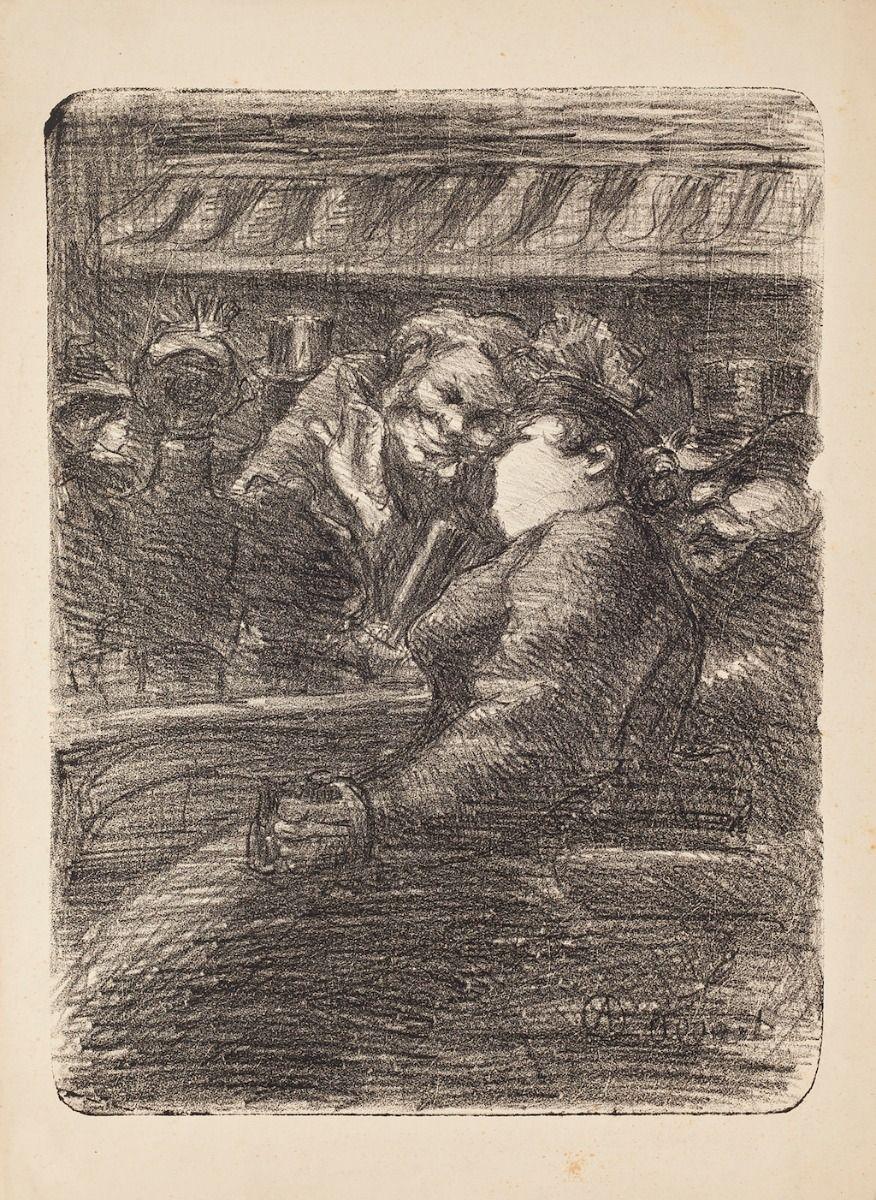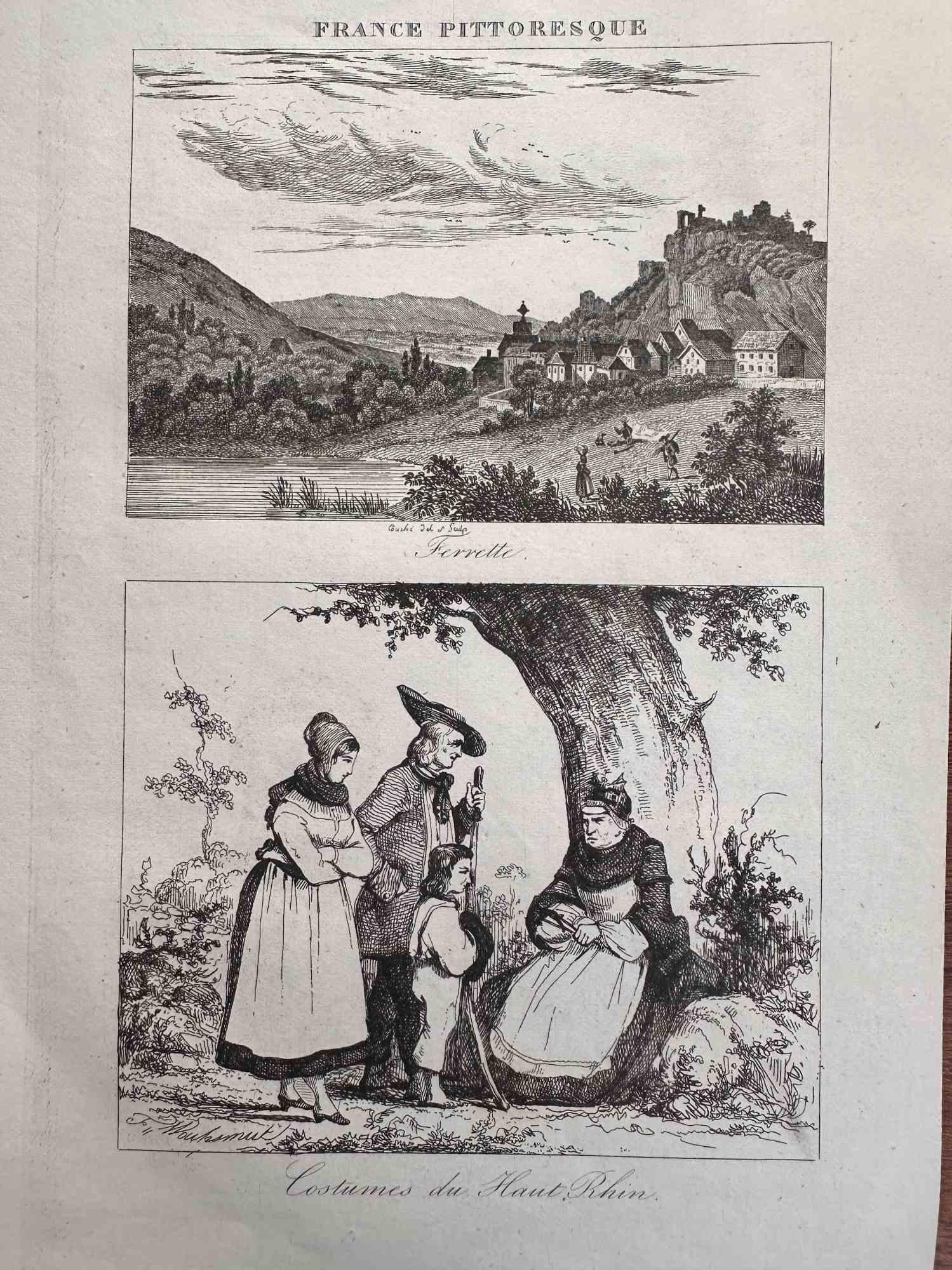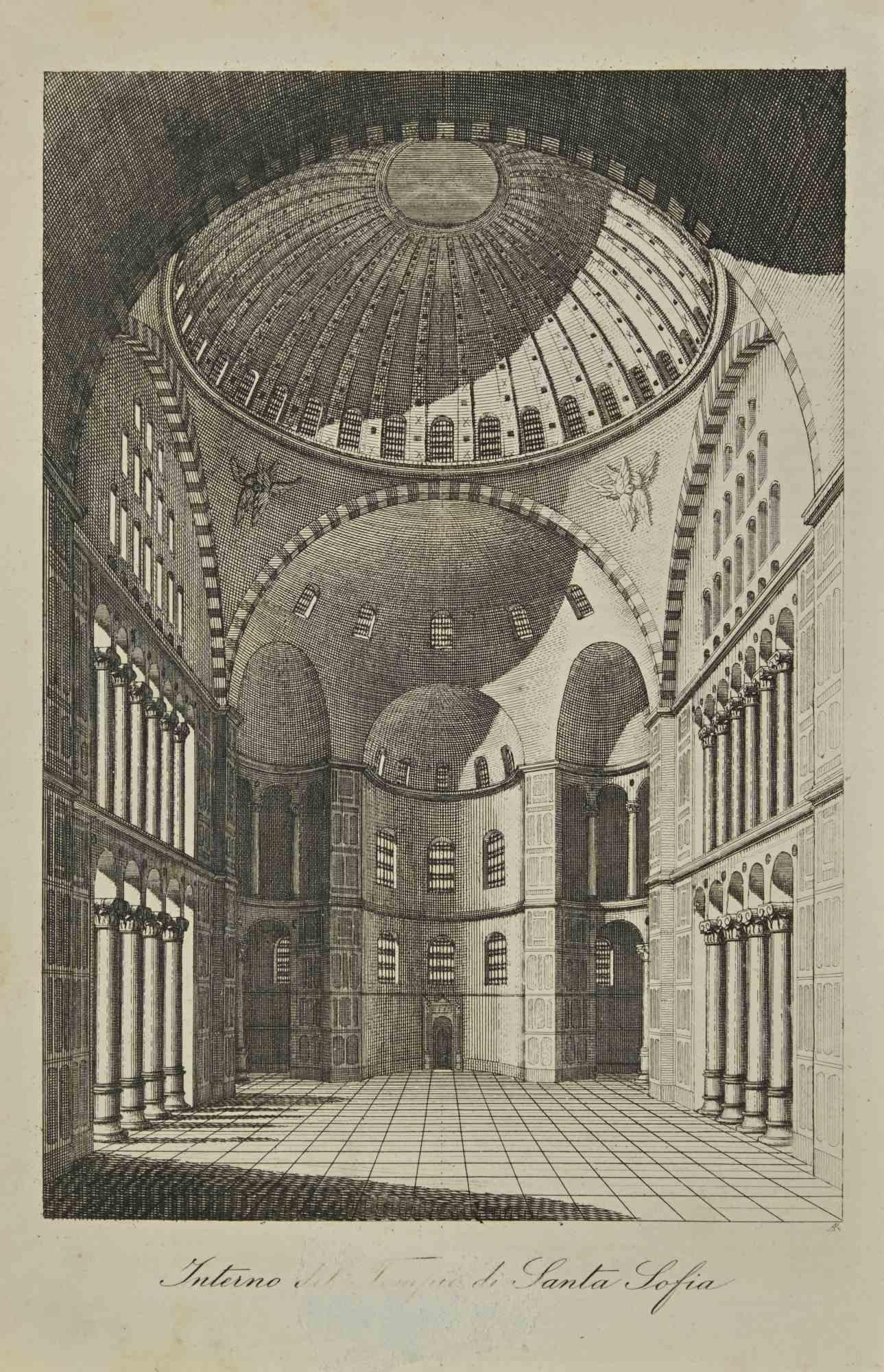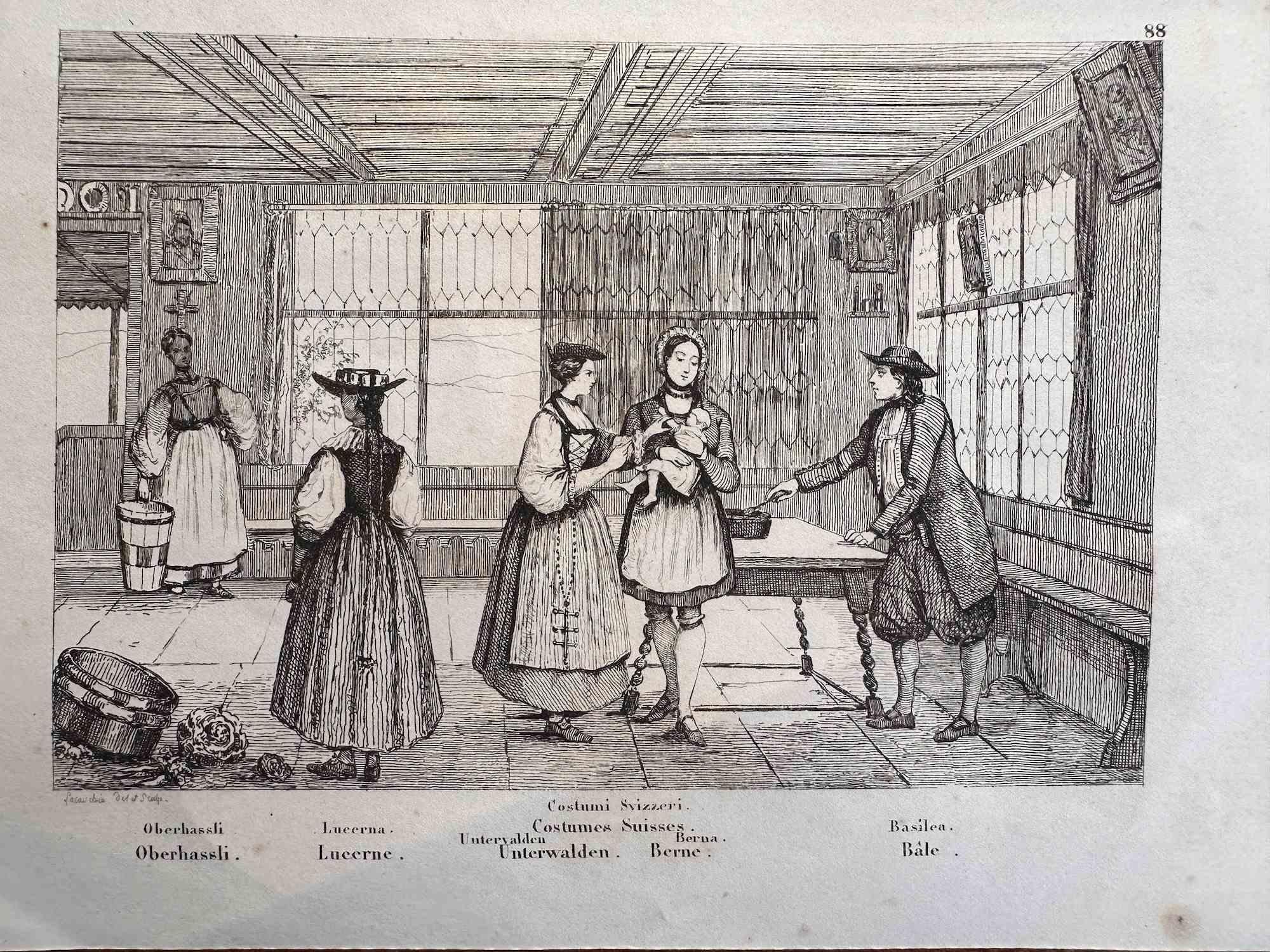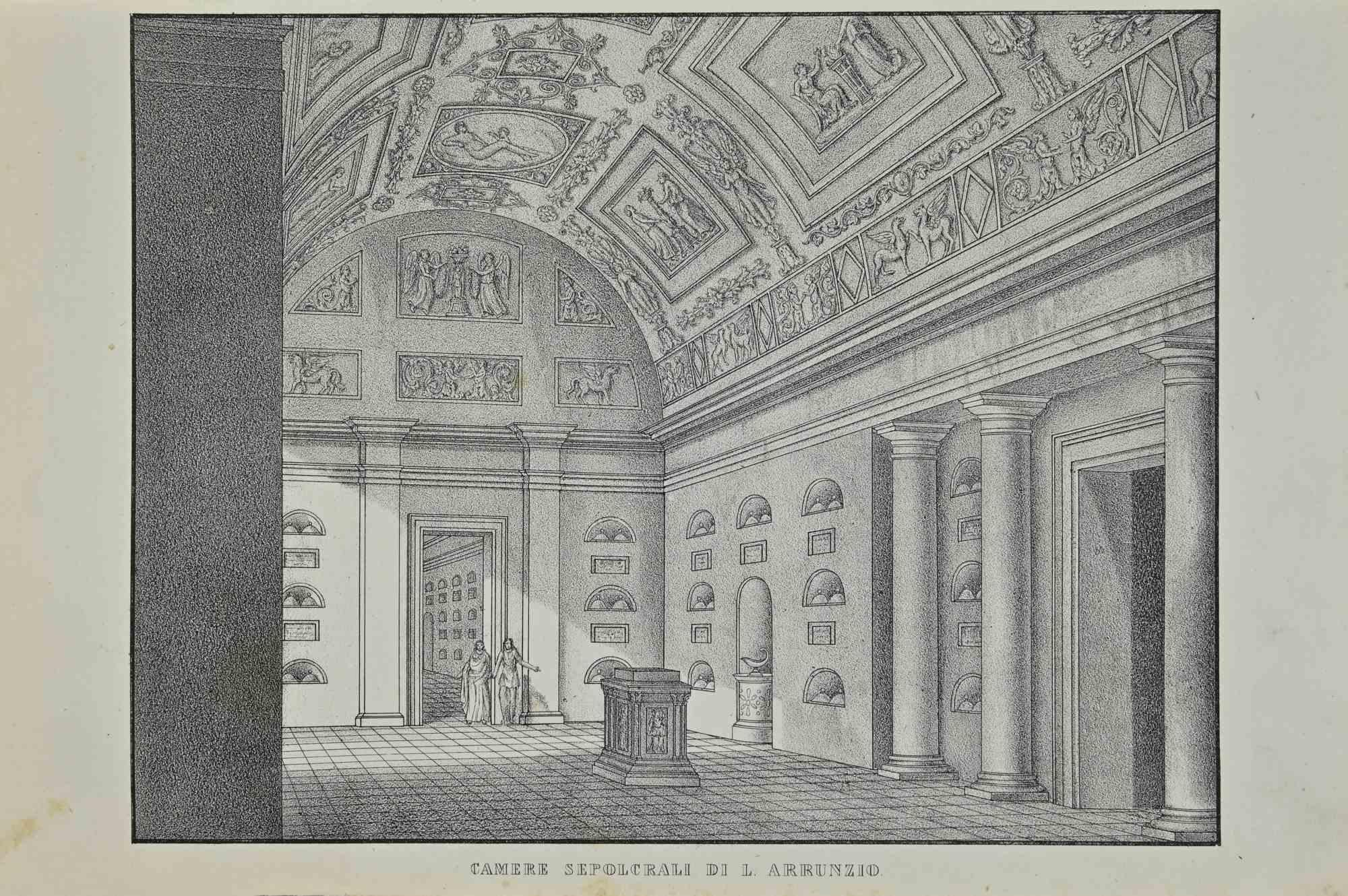Items Similar to Vintage Russian Ukrainian Shtetl Scene Judaica Lithograph Jewish Man Cow Cat Dog
Want more images or videos?
Request additional images or videos from the seller
1 of 10
Anatoli Lvovich KaplanVintage Russian Ukrainian Shtetl Scene Judaica Lithograph Jewish Man Cow Cat Dog1957-1961
1957-1961
About the Item
Pencil signed and dated, Judaica Lithograph.
Anatoli Lwowitch Kaplan was a Russian painter, sculptor and printmaker, whose works often reflect his Jewish origins.
His father was a butcher in Rahachow which was at that time within the Jewish Pale of Settlement in Russia. His background was therefore not dissimilar to that of Marc Chagall, born a generation earlier in 1887, and although their lives were very different, their art has much in common. The shtetl figures in many of Kaplan's paintings - autobiographical references are very clear in The Butcher's Shop (1972) and Tailor's Shops (1975) and in the many illustrations which he was to create to the works of Sholem Aleichem. Along with Mane Katz, Issachar ber Ryback and Yankel Adler he was one of the artists who brought the joy and mystery of the Shtetl to Western Europe.
Around 1922 Kaplan came to Leningrad (then named Petrograd), where he was to base his career for the rest of his life, although he often revisited the towns of his childhood. He graduated in 1927 from the Russian Academy of Arts there.
In the 1930s he became associated with a group of artists and lithographers in Leningrad which had been instructed to prepare a series of works dedicated to the remote Jewish Autonomous Oblast, being created by Joseph Stalin in the hope of resettling Russia's Jewish population in a remote area in the Far East of the country. Here Kaplan learnt and took to the skills of printmaking, developing many individual techniques. His first cycle of prints (1937–1940) was entitled Kasrilevka, (the name of the village invented by Sholem Aleichem).
During the war Kaplan was at first evacuated to the Urals, but returned to Leningrad in 1944. His lithograph cycle of Landscapes of Leningrad during the Days of the Blockade(1948) was widely acclaimed in Russia and was purchased by eighteen State galleries.
From the 1950s onwards Kaplan's artworks concentrated on Jewish themes, despite constant and often serious opposition and obstruction from the Soviet cultural authorities. Amongst these works should be mentioned his cover and illustrations to the Jewish Folksongs of Dmitri Shostakovich (1977), illustrations to Aleichem's Tevye the Milkman (3 series, 1957–1966), The Enchanted Tailor (1954–57) and Song of Songs (1962), and a magnificent series of coloured lithographs (printed in London in 1961) on the old Jewish Passover song Chad Gadya (One Kid Goat). Throughout this time Kaplan was also producing paintings though in view of their subject matter they were rarely displayed in the Russia of his time. From 1967 onward he began also to produce ceramics and sculptures, including a remarkable set based on the characters of Gogol's Dead Souls.
A substantial retrospective exhibition of Kaplan's work was held at the Russian Museum, St. Petersburg, in 1995. Other major exhibitions have been held in New York City (1992), London, Amsterdam, Jerusalem and elsewhere.
- Creator:Anatoli Lvovich Kaplan (1902 - 1980, Russian)
- Creation Year:1957-1961
- Dimensions:Height: 24.25 in (61.6 cm)Width: 18.5 in (46.99 cm)
- Medium:
- Movement & Style:
- Period:
- Condition:good. never framed. minor wear.
- Gallery Location:Surfside, FL
- Reference Number:1stDibs: LU38214141452
About the Seller
4.9
Platinum Seller
These expertly vetted sellers are 1stDibs' most experienced sellers and are rated highest by our customers.
Established in 1995
1stDibs seller since 2014
1,558 sales on 1stDibs
Typical response time: 1 hour
- ShippingRetrieving quote...Ships From: Surfside, FL
- Return PolicyA return for this item may be initiated within 3 days of delivery.
More From This SellerView All
- Vintage Russian Ukrainian Soldiers in Forest Scene Judaica Lithograph Jewish ArtBy Anatoli Lvovich KaplanLocated in Surfside, FLPencil signed and dated, Russian Soviet Judaica Lithograph. Anatoli Lwowitch Kaplan was a Russian painter, sculptor and printmaker, whose works often reflect his Jewish origins. His...Category
Mid-20th Century Modern Figurative Prints
MaterialsLithograph
- Machpela Cave Chevron 1969 Israeli Judaica Lithograph Baruch Nachshon Chabad ArtBy Baruch NachshonLocated in Surfside, FLBaruch Nachshon, was born in Mandatory Palestine in 1939, in the city of Haifa. Nachshon began to paint in early childhood, and developed his relationship to art and to artists throu...Category
1960s Modern Interior Prints
MaterialsLithograph
- 1936 Lithograph Interregnum Portfolio Butcher Shop Small Edition Weimar GermanyBy George GroszLocated in Surfside, FLHand lithography on BFK Rives French hand moulded paper Style: German New Objectivity (Neue Sachlichkeit) According to the frontis these were produced by Hand Lithography. According...Category
1930s Modern Interior Prints
MaterialsLithograph
- 1936 Lithograph Interregnum portfolio Artist Studio small edition Weimar GermanyBy George GroszLocated in Surfside, FLHand lithography on BFK Rives French hand moulded paper Style: German New Objectivity (Neue Sachlichkeit) According to the frontis these were produced by Hand Lithography. According...Category
1930s Modern Interior Prints
MaterialsLithograph
- 1936 Lithograph Interregnum Portfolio Windblown Man Small Edition Weimar GermanyBy George GroszLocated in Surfside, FLHand lithography on BFK Rives French hand moulded paper Style: German New Objectivity (Neue Sachlichkeit) According to the frontis these were produced by Hand Lithography. According...Category
1930s Modern Interior Prints
MaterialsLithograph
- Israeli Expressionist Yosl Bergner Modernist Lithograph Kibbutz Coffee GrinderBy Yosl BergnerLocated in Surfside, FLAbstract Composition, Coffee Grinder Hand signed in Hebrew Lower right. limited edition. Dimensions: H 18.5" x 24.9" Bergner, Yosl (Vladimir Jossif) (b Vienna, 13 Oct 1920). surrealist, surrealism. belongs to the generation of people uprooted from childhood landscapes and forced by circumstance to build a life elsewhere. Uniquely, he became an Israeli without shedding his Jewish cosmopolitan-refugee identity, an identity he zealously guarded in the melting pot of Israel of the "fifties" and "sixties". In the years that have passed since he acquired his art education at the Melbourne National Gallery Art School in Australia, concepts in the art world have changed many times over. from the Jewish paintings and the depictions of Australian Aborigines through the children of safed, the wall paintings, the masks, the angels and kings, the still lifes, the "Surrealistic" paintings, the toys and flowers, the paintings inspired by the Bird-head Haggadah, the Kafka paintings, the Pioneers, the Kimberley fantasy (about his father's excursion in 1933 to northern Australia, in search of a "territory for the Jews"), Brighton Beach and the seascapes inspired by Eugene Boudin, through the chairs in the "Kings of Nissim Aloni" episode to the "Zionists" and the recent "Tahies". "During the six years that Bergner has lived in Israel," wrote Eugene KoIb, Direct. or of the Tel Aviv Museum, in the catalog of the Bergner exhibit in 1957, "he has established himself among Israeli artists." Bergner was indeed one of the artists who represented Israel in the Venice Biennial (1956; 1958) and in the Sao Paulo Biennial in 1957; this, in spite of the fact that Yosl Bergner did not harness his art to serve the Zionist ethos, that being, at the time, the order of the day (his paintings were in fact rejected at first as being those of a "Diaspora Jew"); he didn't "naturalize" himself by alliance to the country's landscape or its special light, nor did he turn to abstract painting. Painter of "the Jewish condition". the painter involved in Nissim Aloni's theater and the popular illustrator of poetry books and literary texts, he stuck to the narrative which drew its images from his childhood world, from Yiddish and from the Jewish culture of Poland in whose bosom he grew, with its literature, theater and fantasy. From this point of view his position as an "outsider", first in Australia and later in Israel, like that of the European Jew on the periphery of the dominant culture, afforded him a special dialectic vantage point from which to view his human and cultural surroundings. He was and remains a figurative painter even when he verges on the abstract. Israeli painter of Austrian birth, active in Australia. He grew up in Warsaw. His father, the pseudonymous Jewish writer Melech Ravitch, owned books on German Expressionism, which were an early influence. Conscious of rising anti-Semitism in Poland, Ravitch visited Australia in 1934 and later arranged for his family to settle there. Bergner arrived in Melbourne in 1937. Poor, and with little English, his struggle to paint went hand-in-hand with a struggle to survive. In 1939 he attended the National Gallery of Victoria’s art school and came into contact with a group of young artists including Victor O’Connor (b 1918) and Noel Counihan...Category
Mid-20th Century Modern Figurative Prints
MaterialsScreen, Lithograph
You May Also Like
- Conversation - Lithograph by Adolphe Albert - 20th CenturyLocated in Roma, ITConversation is an original lithograph artwork realized by Adolphe Albert (1855-1938). Signed on the plate, The state of preservation is very good. The artwork represents a convers...Category
20th Century Modern Figurative Prints
MaterialsLithograph
- Ancient Costume - Haut Rhine - Lithograph - Late 19th centuryLocated in Roma, ITAncient Costume - Haut Rhine is a lithograph print on paper in the Late 19th century. Good conditions. From the suite of "France Pittoresques, including costume of the world.Category
Late 19th Century Modern Figurative Prints
MaterialsLithograph
- Temple of Saint Sophia - Lithograph - 1862Located in Roma, ITTemple of Saint Sophia is a lithograph on paper realized in 1862. The artwork belongs to the Suite Uses and customs of all the peoples of the universe: " History of the government, ...Category
1860s Modern Figurative Prints
MaterialsLithograph
- Swiss Costume - Lithograph - Late 19th centuryLocated in Roma, ITSwiss Costume is a lithograph print on paper in the Late 19th century. Good conditions. From the suite of "France Pittoresques, including costume of the world".Category
Late 19th Century Modern Figurative Prints
MaterialsLithograph
- Uses and Customs - Burial Chamber - Lithograph - 1862Located in Roma, ITUses and Customs - Burial Chamber is a lithograph on paper realized in 1862. The artwork belongs to the Suite Uses and customs of all the peoples of the universe: " History of the g...Category
1860s Modern Figurative Prints
MaterialsLithograph
- William Rose, (Cubist Figure)By William RoseLocated in New York, NYWilliam Rose was a hugely successful film and poster artist in the 1930s and 40s. This (Cubist Figure) seems to be an artist at work. Her hands are busy with a project on the surface...Category
Mid-20th Century American Modern Figurative Prints
MaterialsLithograph
Recently Viewed
View AllMore Ways To Browse
Ukrainian Vintage
Tailor Print
Jewish Mid Century Art
Vintage Western Illustrations
Dog And Cat
Modern Cow Art
Resting Cat
Vintage Cow Sign
Vintage Cow Signs
Scene Judaica Jewish
Midcentury Modern Kids
Judaica London
Chagall 1977
European Village 1940
Jewish Shtetl
Vintage Cow Print
Leningrad Landscape Artists
Marc Chagall 1975
